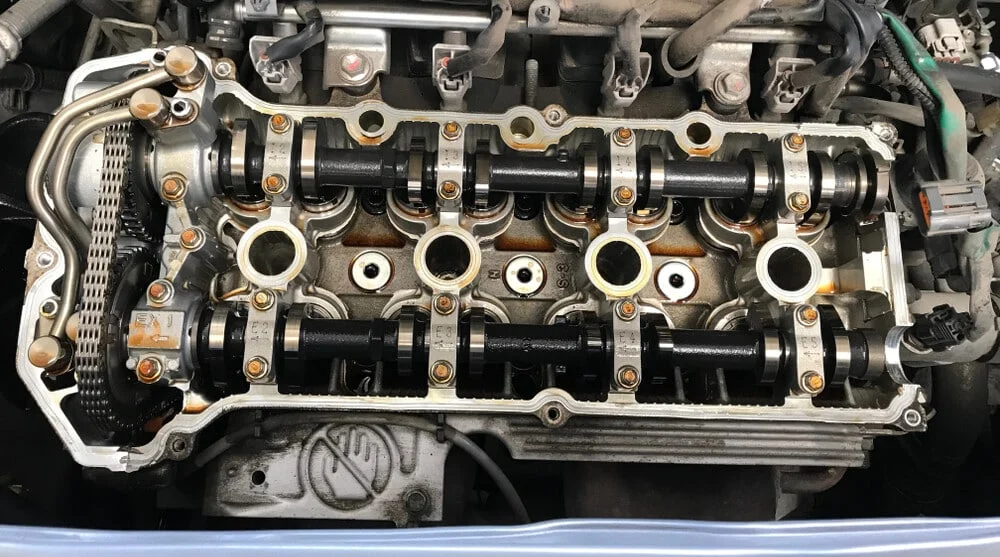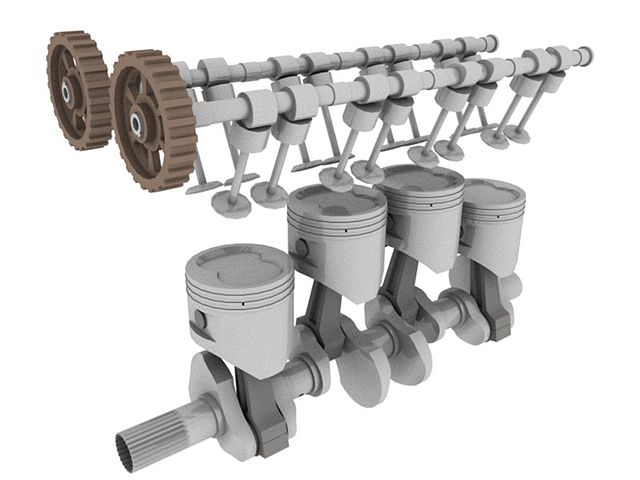A 1.0 liter DOHC (Dual Overhead Cam) engine is a small, compact engine that has two camshafts in the cylinder head. The camshafts are responsible for opening and closing the engine’s intake and exhaust valves, which control the flow of air and fuel into the engine and the exhaust gases out of the engine.

DOHC engines are known for their high performance and efficiency, as the dual camshafts allow for precise control over the engine’s valve timing, which can increase power output and fuel economy. Additionally, DOHC engines are generally more compact than their single overhead cam (SOHC) counterparts, making them a popular choice for small cars, motorcycles, and other vehicles where space is at a premium.
A 1.0 liter DOHC engine would typically be a four-cylinder engine, with each cylinder having its own set of intake and exhaust valves controlled by the dual overhead camshafts. This type of engine would typically produce around 60-80 horsepower and be designed for use in small cars and other vehicles that prioritize fuel economy and efficiency over raw power.
Overall, a 1.0 liter DOHC engine is a small but high-performing engine that is popular in a variety of vehicles due to its compact size and efficient design.
How many cylinders a DOHC engine can have?
DOHC (Dual Overhead Cam) engines can be designed with different numbers of cylinders, depending on the intended use and application. The number of cylinders in a DOHC engine will affect its power output, fuel efficiency, and overall performance.

Most commonly, DOHC engines are designed with four cylinders (inline-four) or six cylinders (V6), although they can also be designed with two cylinders (V-twin) or eight cylinders (V8). However, it is possible to design a DOHC engine with any number of cylinders, depending on the specific needs of the vehicle or application.
In general, DOHC engines with more cylinders tend to produce more power and torque than engines with fewer cylinders, although they may also be less fuel efficient. Conversely, DOHC engines with fewer cylinders may be more efficient, but may produce less power overall.
Ultimately, the number of cylinders in a DOHC engine will depend on a variety of factors, including the intended use, power requirements, and fuel efficiency goals of the vehicle or equipment in which the engine will be installed.
What are the differences between a 1.0l DOHC engine and a 1.5l DOHC engine?
The primary difference between a 1.0-liter DOHC (Dual Overhead Cam) engine and a 1.5-liter DOHC engine is their size and power output.
A 1.0-liter DOHC engine is a small engine that typically has four cylinders and produces around 60-80 horsepower. It is generally designed for use in small cars and other vehicles where fuel economy is a priority. Due to its smaller size and lower power output, a 1.0-liter engine may feel less powerful and may not be as suitable for heavy loads or high-speed driving.
On the other hand, a 1.5-liter DOHC engine is a larger engine that typically has four or six cylinders and produces around 100-200 horsepower, depending on the specific design. It is generally designed for use in midsize cars and small SUVs, where a balance of power and fuel efficiency is desired. Due to its larger size and higher power output, a 1.5-liter engine may feel more powerful and be better suited for heavier loads and higher-speed driving.
In addition to their size and power output, the specific design and tuning of the engine can also have a significant impact on its performance and efficiency. Factors such as the number of valves per cylinder, the fuel injection system, and the engine management system can all affect the engine’s power output, fuel economy, and overall performance.
Example of Popular car in Malaysia that is powered by 1.0 liter DOHC Engine
In Malaysia, several popular car models are powered by 1.0-liter DOHC (Dual Overhead Cam) engines. Here are some examples:
- Perodua Axia – The Perodua Axia is a popular small hatchback that is powered by a 1.0-liter DOHC engine that produces up to 67 horsepower and 91 Nm of torque. It is known for its fuel efficiency and affordability, making it a popular choice for drivers in Malaysia.
- Perodua Bezza – The Perodua Bezza is a compact sedan that is also powered by a 1.0-liter DOHC engine. Like the Axia, it is known for its fuel efficiency and affordability, making it a popular choice for drivers who want a small car that is easy to drive and maintain.
- Perodua Ativa – Is another example of a popular car in Malaysia that is powered by a 1.0-liter DOHC (Dual Overhead Cam) engine. The Ativa is a small SUV that was introduced in 2021 and is one of the latest offerings from Perodua. The Ativa is powered by a 1.0-liter three-cylinder DOHC engine that produces up to 98 horsepower and 140 Nm of torque. The engine is turbocharged, which helps to improve its power output and overall performance. The Ativa is also equipped with a continuously variable transmission (CVT) that helps to optimize fuel efficiency and provide a smooth driving experience.
- Kia Picanto – The Kia Picanto is a small hatchback that is powered by a 1.0-liter DOHC engine. It produces up to 66 horsepower and 95 Nm of torque, making it suitable for city driving and commuting. The Picanto is known for its modern design, practicality, and good value for money.
All of these car models are popular in Malaysia and are known for their fuel efficiency, affordability, and practicality. The 1.0-liter DOHC engines used in these models help to make them efficient and reliable, which is an important factor for many drivers in Malaysia.
Read Also: Perodua Axia Vs Myvi : Choosing your “First” Car
Is time to renew your road tax & insurance? Use our promo code “GOMOTOR” at GoInsuran.com for discount!


Submitting your news to Motortrader.com.my is easy. Simply send an email to [email protected] with your press release or announcement attached as a Word or PDF document. Please include your contact information and any relevant images or videos that you would like to accompany your news.